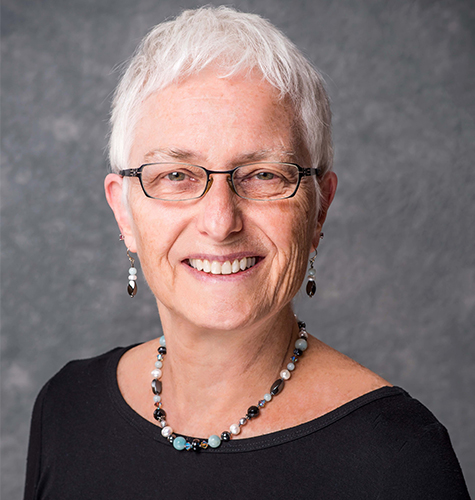Written by: Christine Curcio, Ph.D.
Media contact: Adam Pope
 Christine Curcio, Ph.D.
Christine Curcio, Ph.D.
This editorial originally appeared in the October 2018 issue of Investigative Ophthalmology & Visual Science.
Modern investigative ophthalmology and vision science uses human ocular tissues for laboratory studies of anatomy, physiology, biochemistry, pathology, genomics and proteomics, as well as for ophthalmic device research and development. Population aging increasingly focuses attention on chronic diseases, such as age-related macular degeneration (AMD), glaucoma and diabetic retinopathy. Seminal discoveries in human eyes can set a course for an entire research field to follow. Furthermore, the need to revisit well-characterized human tissues in light of new information arising from clinical observations and research using model systems is ongoing. Because the macula, aqueous outflow tract and lamina cribrosa have unique biology, human tissue will be a mainstay of AMD and glaucoma research for the foreseeable future. To address AMD specifically, recent editorialists have called for new and compelling molecular pathology data from human donor eyes.
In 2005, vision researchers and representatives of eye banks convened to discuss the declining availability of human eye tissue recovered for research purposes, resulting in a 2006 editorial in Investigative Ophthalmology & Visual Science (IOVS). This article documented the decline, described how changes in the eye banking industry in prior decades contributed, and called for renewed communication between scientific and eye bank communities to meet tissue needs for research.
Thirteen years later, vision researchers and representatives of eye banks, under the auspices of the Association for Research in Vision and Ophthalmology (ARVO) and the Eye Bank Association of America, again convened with much the same mission. The outcome of a survey of ARVO members regarding human tissue used in their research is now reported. Salient points of the survey, which included ARVO members from 34 countries, as well as multiple research areas and career stages, include a widespread consensus among researchers that human tissues are needed for individual programs, an expressed difficulty in obtaining tissues within a preferred death-to-preservation interval (typically six hours) and accompanied by adequate clinical documentation, and interest in a new online portal, set to launch in the fall of 2018. At the portal, United States eye banks will register answers to standardized questions about tissue availability and services, allowing researchers to seek a tissue source that best fits their needs. Although many researchers will continue to use local eye banks, the portal holds promise to link tissue providers and interested users, wherever they are.
It is time to consider a next step in the overall goal of well-informed, transparent and reproducible use of human ocular tissues for impactful research — the development of guidelines for publishing data obtained from human tissues. Ideally a checklist can be developed that can guide authors and reviewers alike. This goal also is consistent with the National Institutes of Health Rigor and Reproducibility movement.
Specific points to consider for guidelines include these, and others:
- Manuscripts using human tissues should have a Methods section describing all procedures.
- What organization provided tissue? Naming the eye bank demonstrates to governing boards that research donations make a difference and to readers that eye banks are partners in the enterprise.
- What were the criteria for recovery given to the eye bank?
- What was the time interval between death and preservation, and death and utilization? Eyes may be recovered right after death, but overnight shipping inserts a delay that obviates the value of rapid recovery. RNA starts degrading quickly after death in eyes under typical eye bank conditions. For example, brain (analogous to retina) has much better RNA quality with rapid versus delayed recovery.
- If diseased and comparison tissues are used in a study, how was a diagnosis made, by whom and by what criteria? Are these diagnostic criteria also used by others, and are they consistent with available clinical guidelines?
- What specialized dissection techniques and tools are needed to prepare tissues for assays?
- Were tissues subdivided for regional analysis?
The ARVO-sponsored task force of researchers and eye bank representatives has taken the lead in developing a mechanism for certifying eye banks as research resources, culminating in this web-based portal. Accordingly, it is fitting that IOVS, ARVO’s flagship journal, will take the lead on developing publication guidelines as a collaboration among stakeholders, including authors, editors and eye bank representatives. A committee of editorial board members and designated interested parties will convene with the goal of presenting materials to the full editorial board at the 2019 Annual Meeting in Vancouver, British Columbia, Canada.
Curcio is the White-McKee Endowed Professor in Ophthalmology and director of the AMD Histopathology Lab at the UAB Department of Ophthalmology and Visual Sciences.
